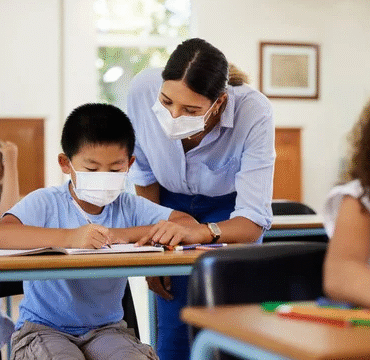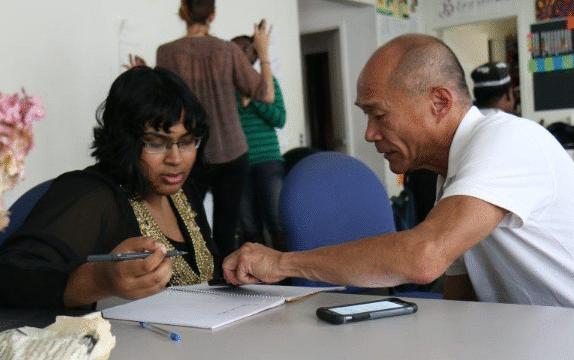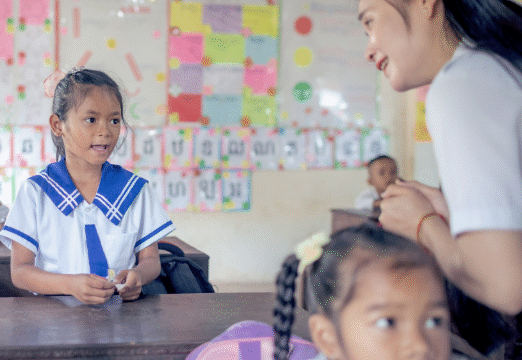Education is often described as a shared journey where
teachers and parents walk alongside children to help
them grow, learn, and discover their potential. While
schools provide the foundation for academic and social development, the role of parents as the first teachers of their children remains vital. When families and educators work together in harmony, students receive consistent support that strengthens both their confidence and their ability to succeed. Parent-teacher partnerships are not just about occasional meetings or brief conversations at the school gate. They are about creating a steady collaboration that ensures every child is nurtured both at home and in the classroom.
At the heart of these partnerships lies communication. Parents want to understand what their children are learning, while teachers hope to know more about the unique personalities and home environments of their students. Regular conversations bridge this gap. These exchanges do not have to be lengthy or complicated. Simple updates, notes about progress, or a quick phone call can keep both sides informed. This consistent flow of information helps avoid misunderstandings and ensures that everyone is working toward the same goal: the well-being and success of the child.
Trust is another cornerstone of parent-teacher collaboration. Parents trust teachers to provide not only lessons in reading, writing, and mathematics but also guidance in life skills, empathy, and resilience. Teachers, in turn, trust parents to reinforce positive behaviors, encourage curiosity, and value education at home. Building this trust takes time, but it grows through honesty, mutual respect, and a willingness to listen. When children witness their parents and teachers respecting each other’s roles, they feel more secure and motivated to do their best.
One of the most significant benefits of strong parent-teacher partnerships is the way they improve student performance. Research consistently shows that children whose families are actively involved in their education achieve higher grades, attend school more regularly, and develop stronger social skills. This involvement does not mean hovering over homework or pressuring children with expectations. Instead, it is about showing interest, asking questions, and encouraging learning in everyday life. A simple conversation at the dinner table about what was learned at school can make a big difference.
Partnerships also empower teachers. When educators understand the background, culture, and values of their students’ families, they are better equipped to design lessons that feel relevant and engaging. Parents can provide insights into a child’s strengths, challenges, and learning style, which can help teachers personalize their approach. This shared knowledge transforms the classroom into a more inclusive and supportive space, where every student feels seen and valued.
Parents and teachers working together also help address challenges more effectively. Children may face obstacles such as difficulty with certain subjects, struggles with confidence, or social issues with peers. When both sides collaborate, solutions are found faster and with greater impact. For example, if a student is struggling with reading, a teacher might suggest specific activities while the parent provides time and encouragement at home. Together, these efforts reinforce skills and make progress more achievable.
Another important aspect of partnership is involvement in school life. Parents who participate in school activities, whether through volunteering, attending events, or supporting extracurricular programs, demonstrate to their children that education matters. This visible commitment inspires children to take their studies seriously. Teachers also benefit from such involvement, as it strengthens the sense of community and creates a shared responsibility for educational success.
In today’s world, technology plays a significant role in enhancing parent-teacher communication. Many schools use online platforms where parents can track grades, assignments, and announcements. Video calls and messaging apps make it easier than ever to stay connected. However, while digital tools are helpful, they should not replace personal interaction. A face-to-face conversation or a warm smile during school pick-up still holds immense value in building relationships.
Parent-teacher partnerships also extend beyond academics. Schools teach children about respect, teamwork, and resilience, but these lessons resonate more deeply when they are echoed at home. Parents can support social-emotional learning by modeling kindness, patience, and problem-solving. When children see consistency between home and school, they feel guided and supported in developing their character.
For parents, being involved does not mean needing to know everything about education. Teachers are trained professionals, and parents should never feel inadequate if they cannot help with every homework problem or school project. What matters most is showing genuine interest and encouragement. A child who feels supported at home will carry that confidence into the classroom. Similarly, teachers can ease the pressure by offering guidance and resources that help families participate without feeling overwhelmed.
Partnerships also foster inclusivity. Families come from diverse cultural, linguistic, and socioeconomic backgrounds. Strong parent-teacher collaboration ensures that these differences are respected and embraced. Teachers who invite families to share traditions, stories, or experiences enrich the learning environment for all students. Parents who feel welcomed, regardless of background, are more likely to engage actively, creating a stronger school community.
There are challenges, of course. Busy schedules, work commitments, and language barriers can sometimes make it difficult for parents and teachers to connect. However, small efforts add up. Even if a parent cannot attend every meeting, sending a note of appreciation or asking a brief question about progress shows care and involvement. Teachers, on their part, can accommodate families by offering flexible meeting times or translating key information. These efforts reflect a shared commitment to keeping the child at the center of attention.
Looking ahead, the importance of parent-teacher partnerships will only grow. Education is evolving, with new technologies, teaching methods, and expectations shaping how students learn. Navigating this changing landscape requires cooperation. Parents bring knowledge of their children’s needs, while teachers bring expertise in guiding learning. Together, they form a team that adapts to change and ensures that children remain supported, motivated, and inspired.
Ultimately, the success of parent-teacher partnerships lies in a shared vision: every child deserves the chance to thrive. This vision is achieved not through grand gestures, but through consistent, caring actions. A parent who reads a bedtime story, a teacher who offers encouragement after a mistake, and a community that values collaboration all contribute to building strong educational foundations.
Education is not confined to the walls of a classroom or the pages of a textbook. It is a journey shaped by the people who care most for a child’s future. By nurturing parent-teacher partnerships, we create a supportive circle around students, one that celebrates their achievements, helps them overcome challenges, and guides them toward a brighter tomorrow.
When parents and teachers come together with open hearts and shared purpose, the results go far beyond better test scores or report cards. They build a culture of learning, trust, and respect that stays with children long after they leave school. In this way, parent-teacher partnerships are not just a tool for education, but a gift for life.






